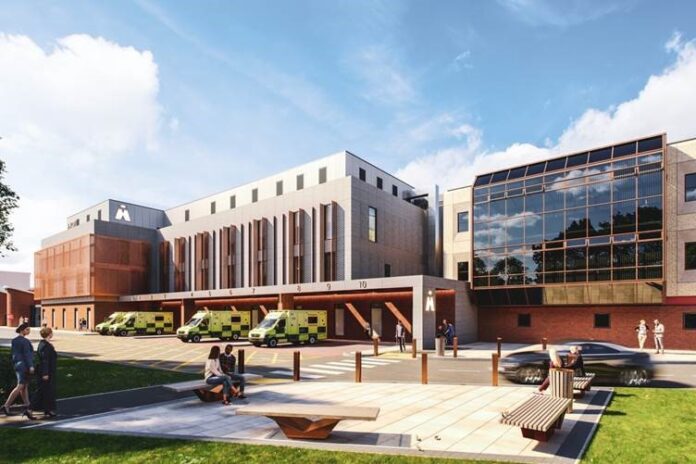Ambitious new plans to transform the Emergency Department (ED) at Manchester Royal Infirmary (MRI) have been given planning approval by Manchester City Council.
The redevelopment will see the facilities modernised to best meet the changing needs of the local population of Manchester. This includes increased capacity, and a more streamlined layout to ensure patients continue to receive high quality emergency treatment and care in an improved environment.
The £40 million renovation project will boost the capabilities of MRI, which is a Major Trauma Centre for Greater Manchester and part of Manchester University NHS Foundation Trust (MFT). Upgraded facilities will include an expanded and improved Emergency Department, including 10 (up from 6) resuscitation bays and 27 (up from 16) majors cubicles.
Plans also include the creation of six new operating theatres, which will support the hospital’s developing role as a regional centre for specialist surgery.
Construction is expected to start later in the year. Temporary changes to the department’s access and layout will be put in place to ensure it can continue to operate fully throughout the works. In total, construction is expected to take just over three years to complete.
Vanessa Gardener, Chief Executive of MRI, said: “Manchester is a rapidly developing city, with a much larger population and different health requirements to the 1980s when our current Emergency Department was first built. These exciting plans lay out our vision for a new and improved department that will best support the needs of Manchester and beyond, now and in decades to come, for the communities we serve and our staff who work in this department. The new operating theatres will likewise enable us to modernise our surgical facilities and support our growing role as regional centre for emergency, major trauma, vascular, head and neck cancer, liver, transplant and other specialist surgery.
“With Manchester City Council’s approval, we look forward to carrying out the delicate and carefully planned work to make this concept a reality, while continuing to deliver high standards of care for our patients throughout the construction process.”







